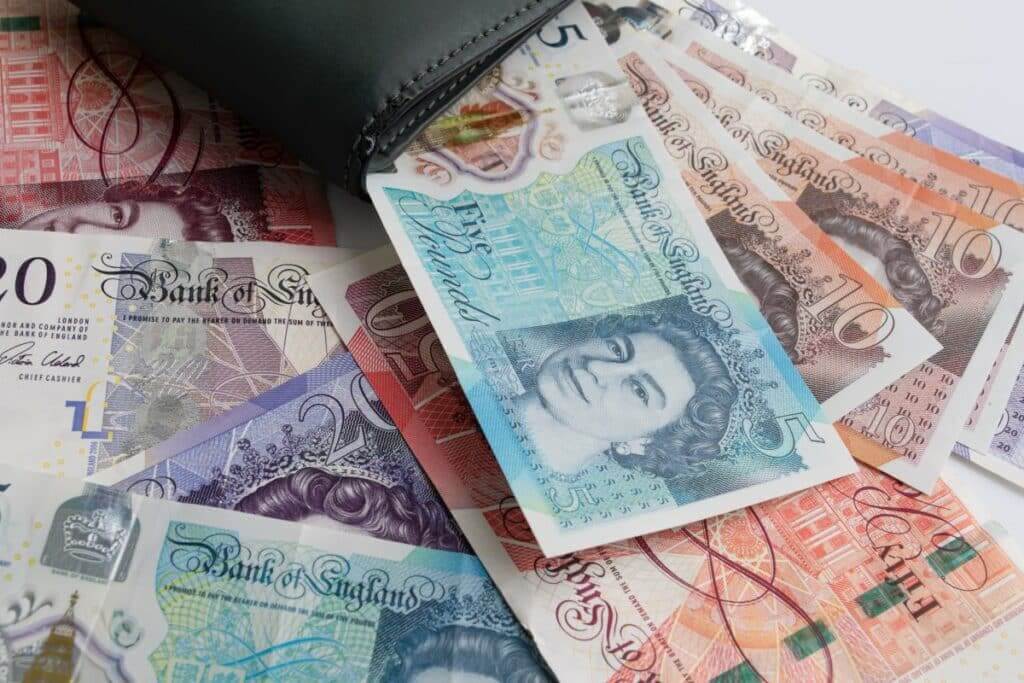The U.S. dollar and the British pound rallied on Wednesday
The U.S. dollar surged forward today, gaining broadly. New data showed that business activity expanded in the United States as well as Britain. Consequently, the sterling also jumped. The U.K. and the U.S. will likely increase interest rates in the coming months as the economies remain resilient in both countries.
On Wednesday, the sterling exchanged hands at $1.21015. It also gained 0.6% on Tuesday. The currency managed to hold on to most of those gains. Meanwhile, the euro soared by 0.05% to $1.0652 today. It had shaved off 0.36% in the previous session, though. The new data showed that the euro area’s flash composite PMI skyrocketed to a nine-month peak of 52.3 this month. Strong services growth supported it, surprising the markets.
Moreover, on Tuesday, reports showed that in the United States, business activity rebounded this month, soaring to its highest level in eight months. This news was also unexpected. In Europe, Britain’s flash composite Purchasing Managers’ Index jumped to 53.0 in February.
Rodrigo Catril, the senior currency strategist at National Australia Bank, noted that thanks to the services sectors performing better than economists expected, the British pound got an extra boost and skyrocketed to a higher level. He added that the euro might continue struggling shortly, though. The European Central Bank still has a long way to go until the eurozone economy rebounds.
The U.S. dollar index exchanged hands at 104.15 on Wednesday. It had also jumped by 0.3% in the previous session. Along with the rebound in U.S. business activity, investors celebrated news about a tight labor market and robust retail sales. Still, inflation remains high in America. So, the Fed will likely continue its aggressive monetary policy instead of tempering rate hikes.
What about the Australian and New Zealand dollars?
The Australian dollar plummeted by 0.31% to $0.6835 on Wednesday. Fresh data showed that in the country, wages soared at the fastest annual pace in a decade over the last quarter. However, they were still lower compared to market forecasts. This news might influence the central bank’s policy, pushing it to slow the tightening process.
Moreover, the Kiwi dollar climbed by 0.1% to $0.62195 today. The currency added new gains to an intra-day peak of $0.6248 hit earlier in the session. The Reserve Bank of New Zealand delivered a new hike, increasing rates by 50 basis points, as investors expected. It also hinted that other hikes would follow as inflation remains high in the country.
Matt Simpson, the senior market analyst at City Index, noted that inflation still weighs on the economy, and unless the government manages to bring it down soon, the central bank will be forced to deliver another 50bp hike.
The U.S. dollar decreased slightly against the Japanese yen. It traded at 134.91 at last. However, the greenback rallied to a two-month peak of 135.23 yen on Tuesday.
How are the EM currencies faring?
Emerging Asian currencies traded in the red on Wednesday. Investors were more cautious about riskier currencies due to expectations of more interest rate increases. The latter could send countries’ economies into recession. Thus, traders preferred buying safe-haven currencies like the dollar or yen.
The South Korean won suffered the most among the EM’s today, dropping by 0.6%. At the same time, the Malaysian ringgit declined by 0.1%. The Philippine peso lost the same amount.
Furthermore, the Taiwanese dollar tumbled by 0.3% today. Investors waited for the fourth-quarter GDP data, which is due later on Wednesday. Meantime, the Indonesian rupiah plummeted by 0.2%, while Jakarta stocks shaved off 1.3%.
Regional equities markets also remained bearish. Stocks in the Philippines and South Korea fell by 1.3% and 1.2%, respectively.

